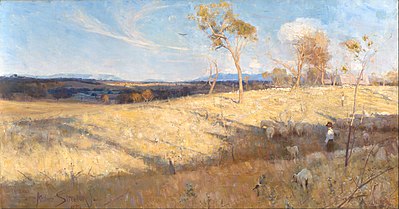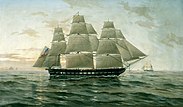Wikipedia:Main Page history/2019 December 2
From today's featured articleChesapeake was a 38-gun wooden-hulled, three-masted heavy frigate of the United States Navy. She was one of the original six frigates authorized by the Naval Act of 1794 and designed by Joshua Humphreys as the young navy's capital ships. Launched at the Gosport Navy Yard on 2 December 1799, Chesapeake began her career during the Quasi-War with France and saw service in the First Barbary War. On 22 June 1807 she was fired upon by HMS Leopard of the Royal Navy for refusing to allow a search for deserters. Chesapeake's commanding officer, James Barron, was court-martialed, and the United States instituted the Embargo Act of 1807 against Great Britain. The Chesapeake–Leopard affair and the Embargo Act were two of the precipitating factors that led to the War of 1812. Chesapeake captured five British merchant ships early in the war before being taken by HMS Shannon. Her timbers, sold in 1819, are now part of the Chesapeake Mill in Wickham, England. (Full article...)
Recently featured:
Did you know ...
|
In the news
On this day
William Shirley (b. 1694) · John Breckinridge (b. 1760) · Chaudhry Muhammad Ali (d. 1982)
More anniversaries:
|
From today's featured list

There have been thirteen Nobel laureates associated with the City University of New York (CUNY). The Nobel Prizes are awarded annually by the Royal Swedish Academy of Sciences, the Karolinska Institute, and the Norwegian Nobel Committee to individuals who make outstanding contributions in the fields of chemistry, physics, literature, peace, and physiology or medicine. They were established by the 1895 will of Alfred Nobel, which dictates that the awards should be administered by the Nobel Foundation. CUNY considers any laureate who attended one of its senior colleges as an affiliated laureate. Arthur Kornberg, who graduated from the City College of New York (pictured), a senior college of CUNY, in 1937, was the first CUNY laureate, winning the Nobel Prize in Physiology or Medicine in 1959. Herbert A. Hauptman and Jerome Karle, both of whom graduated from the City College in 1937 with Kornberg, jointly won the Nobel Prize in Chemistry in 1985, the only CUNY laureates to do so. (Full list...)
Today's featured picture

|
Golden Summer, Eaglemont, is an 1889 oil-on-canvas landscape painting by Australian artist Arthur Streeton. Painted en plein air at the height of a summer drought, it depicts a sunlit, undulating plain, stretching away to the distant blue Dandenong Ranges, outside Melbourne. In 1892, it became the first painting by an Australian-born artist to be exhibited at London's Royal Academy of Arts. Regarded as a masterpiece of Australian impressionism, it is currently on display at the National Gallery of Australia in Canberra, which acquired the painting in 1995 for A$3.5 million, a record price for an Australian painting at that time. Painting credit: Arthur Streeton
Recently featured:
|
Other areas of Wikipedia
- Community portal – Bulletin board, projects, resources and activities covering a wide range of Wikipedia areas.
- Help desk – Ask questions about using Wikipedia.
- Local embassy – For Wikipedia-related communication in languages other than English.
- Reference desk – Serving as virtual librarians, Wikipedia volunteers tackle your questions on a wide range of subjects.
- Site news – Announcements, updates, articles and press releases on Wikipedia and the Wikimedia Foundation.
- Village pump – For discussions about Wikipedia itself, including areas for technical issues and policies.
Wikipedia's sister projects
Wikipedia is hosted by the Wikimedia Foundation, a non-profit organization that also hosts a range of other projects:
Free media repository
Wiki software development
Wikimedia project coordination
Free textbooks and manuals
Free knowledge base
Free-content news
Collection of quotations
Free-content library
Directory of species
Free learning materials and activities
Free travel guide
Dictionary and thesaurus




